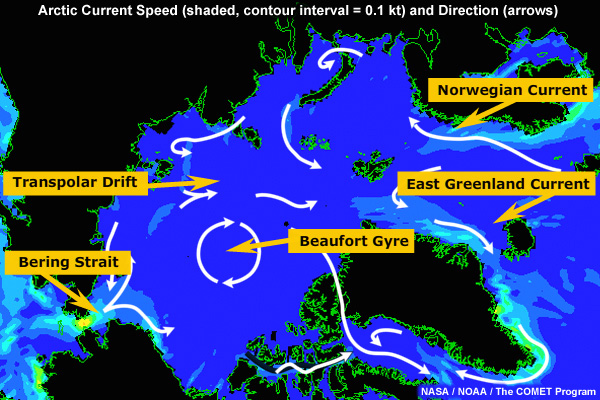OceanographyCurrents

Ocean currents in the Arctic are generally weak, 0.5 kt or less. The Norwegian Current is the northeast extension of the Gulf Stream, and thus brings warm (6 - 8°C), saline water in to the Arctic. Surface currents flow into the Arctic along the Norwegian Current with a minor addition through the Bering Strait.
Within the Arctic basins, surface currents are dominated by 2 features: the anticyclonic Beaufort Gyre and the Transpolar Drift. These currents are weak, even by Arctic standards, because ice cover inhibits wind forcing. Along the continental shelf, close to shore, currents tend to flow west to east, but are strongly influenced by local bathymetry.
Currents exit the Arctic primarily along the East Greenland Current and also filter through the Canadian Archipelago. Surface water exiting the Arctic is fresher and quite cold (-1°C). One consequence of this temperature difference is that Norwegian ports at 70° latitude can be reached by sea during the entire year, while on the other side of the Atlantic, icebergs reach 40°N, south of the Newfoundland Bank.